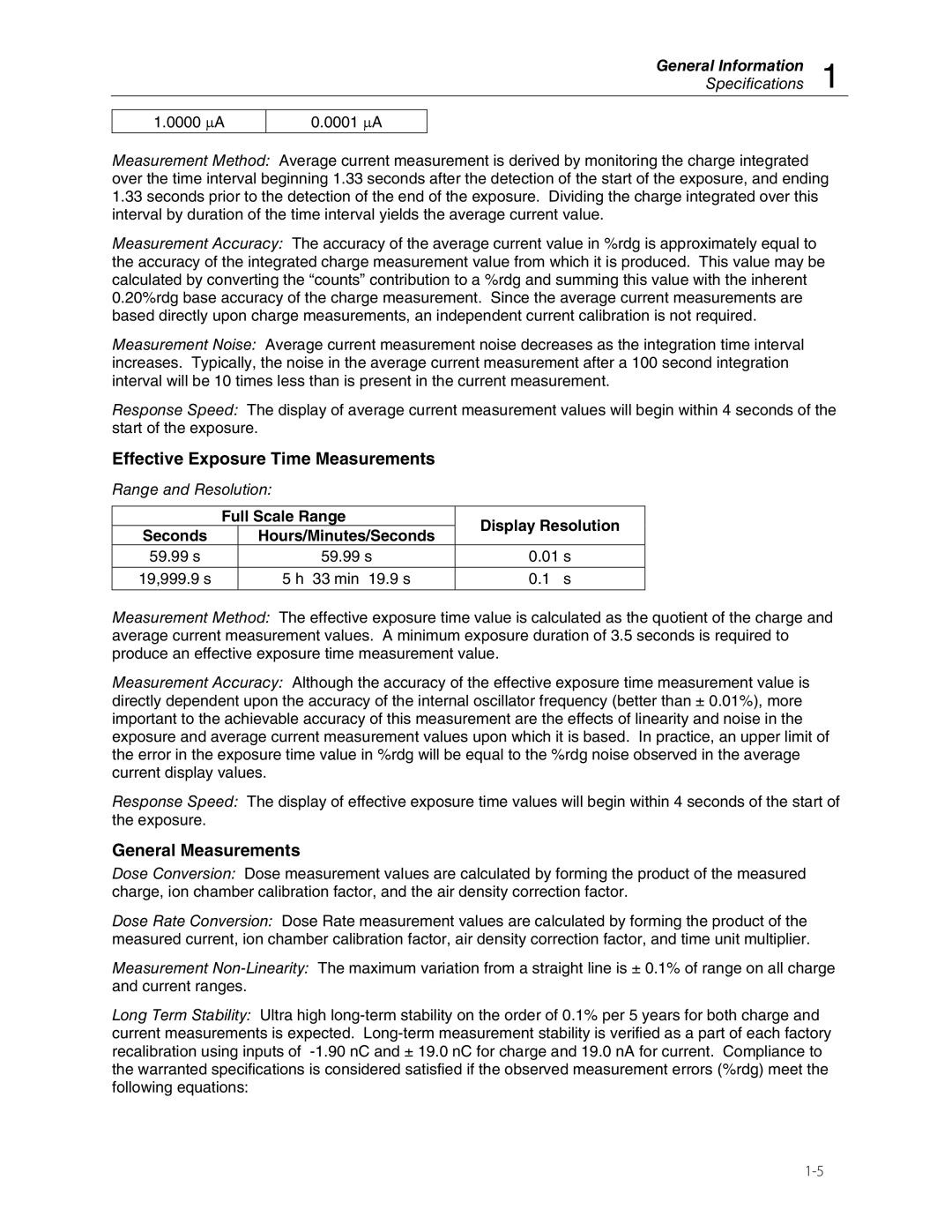General Information
Specifications 1
1.0000 μA
0.0001 μA
Measurement Method: Average current measurement is derived by monitoring the charge integrated over the time interval beginning 1.33 seconds after the detection of the start of the exposure, and ending
1.33seconds prior to the detection of the end of the exposure. Dividing the charge integrated over this interval by duration of the time interval yields the average current value.
Measurement Accuracy: The accuracy of the average current value in %rdg is approximately equal to the accuracy of the integrated charge measurement value from which it is produced. This value may be calculated by converting the “counts” contribution to a %rdg and summing this value with the inherent 0.20%rdg base accuracy of the charge measurement. Since the average current measurements are based directly upon charge measurements, an independent current calibration is not required.
Measurement Noise: Average current measurement noise decreases as the integration time interval increases. Typically, the noise in the average current measurement after a 100 second integration interval will be 10 times less than is present in the current measurement.
Response Speed: The display of average current measurement values will begin within 4 seconds of the start of the exposure.
Effective Exposure Time Measurements
Range and Resolution:
| Full Scale Range | Display Resolution | |
Seconds |
| Hours/Minutes/Seconds | |
|
| ||
59.99 s |
| 59.99 s | 0.01 s |
|
|
|
|
19,999.9 s |
| 5 h 33 min 19.9 s | 0.1 s |
|
|
|
|
Measurement Method: The effective exposure time value is calculated as the quotient of the charge and average current measurement values. A minimum exposure duration of 3.5 seconds is required to produce an effective exposure time measurement value.
Measurement Accuracy: Although the accuracy of the effective exposure time measurement value is directly dependent upon the accuracy of the internal oscillator frequency (better than ± 0.01%), more important to the achievable accuracy of this measurement are the effects of linearity and noise in the exposure and average current measurement values upon which it is based. In practice, an upper limit of the error in the exposure time value in %rdg will be equal to the %rdg noise observed in the average current display values.
Response Speed: The display of effective exposure time values will begin within 4 seconds of the start of the exposure.
General Measurements
Dose Conversion: Dose measurement values are calculated by forming the product of the measured charge, ion chamber calibration factor, and the air density correction factor.
Dose Rate Conversion: Dose Rate measurement values are calculated by forming the product of the measured current, ion chamber calibration factor, air density correction factor, and time unit multiplier.
Measurement
Long Term Stability: Ultra high
